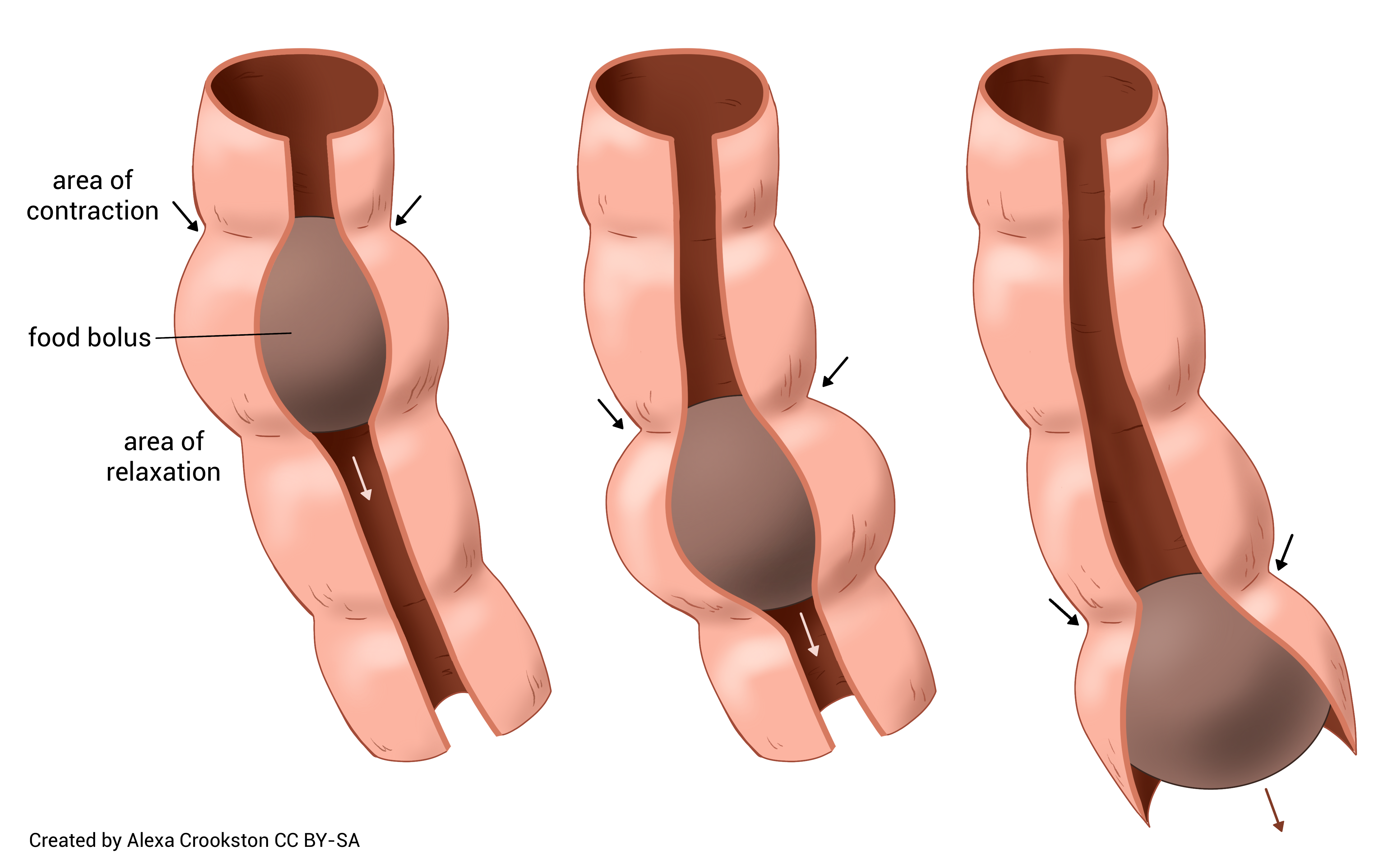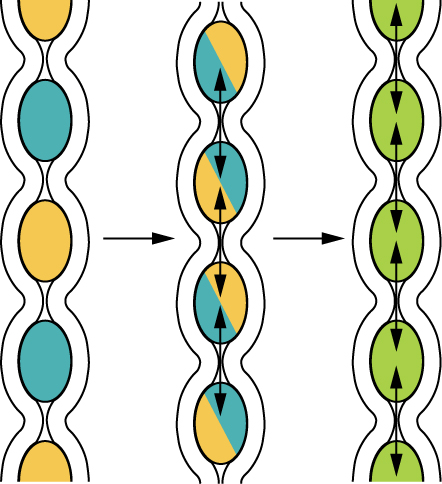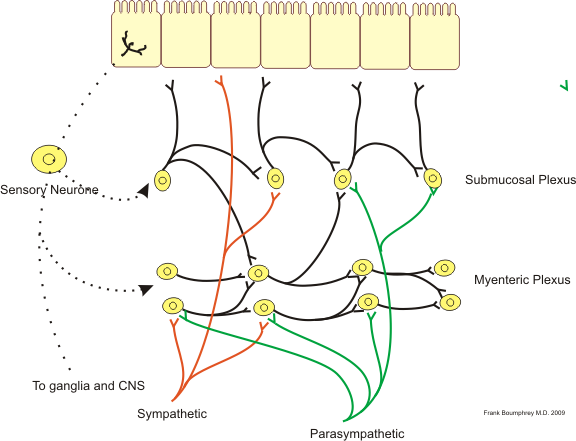Gastrointestinal Motility
Objective 11
Define and understand the motility functions of: peristalsis, segmentation, migrating myoelectric complex, mass movement. Explain the role of chyme volume, chemical composition, and osmolarity in GI motility.
Gastrointestinal motility refers to the mechanism that allows the digestive system keeps things moving through its series of organs.
Neural Control

Peristaltic action is a milking action, with a ring of the gut squeezing while an adjacent ring relaxes. This forces the material from the contracted section into the relaxed portion. By coordinating peristalsis, the GI tract keeps things moving through the large intestine to anus, a process called mass peristalsis.

The alternating contraction and relaxation is called segmentation.
Peristalsis is controlled by rhythmic circuits in the enteric nervous system. The myenteric plexus controls motor neurons innervating the longitudinal and circular muscle layers of the muscularis.

The myenteric plexus also sends axons to the submucosal plexus, where motor neurons innervate the small, weak muscles that give the mucosal epithelium its wrinkles.
Both the plexi receive sensory information from the GI tract.
If scientists record the electrical activity of the muscles at a single point in the bowel wall, they see waves of contraction and relaxation. If they observe electrical activity along a length of bowel wall, each of these waves appears to move forward in the GI tract. This is called the migrating myoelectric complex.
Other Factors
At least three factors can increase bowel motility, in extreme cases pushing the balance of the GI tract toward diarrhea:
- Chyme volume: an increase in chyme volume increases motility.
- Chemical composition: chemicals that increase electrical activity, for example by activating sensory nerves of the GI epithelium, increase motility.
- Osmolarity: if non-absorbable chemicals (such as those found in sugar-free candies or some laxatives) are higher than 300 mOsm/kg (blood tonicity), water is “drawn” into the lumen.
Media Attributions
- U18-063 Peristalsis © Crookston, Alexa is licensed under a CC BY-SA (Attribution ShareAlike) license
- U18-064 Segmentation © Betts, J. Gordon; Young, Kelly A.; Wise, James A.; Johnson, Eddie; Poe, Brandon; Kruse, Dean H. Korol, Oksana; Johnson, Jody E.; Womble, Mark & DeSaix, Peter is licensed under a CC BY (Attribution) license
- U11-014 Neural Control Gut © Boumphrey, Frank MD is licensed under a CC BY-SA (Attribution ShareAlike) license

